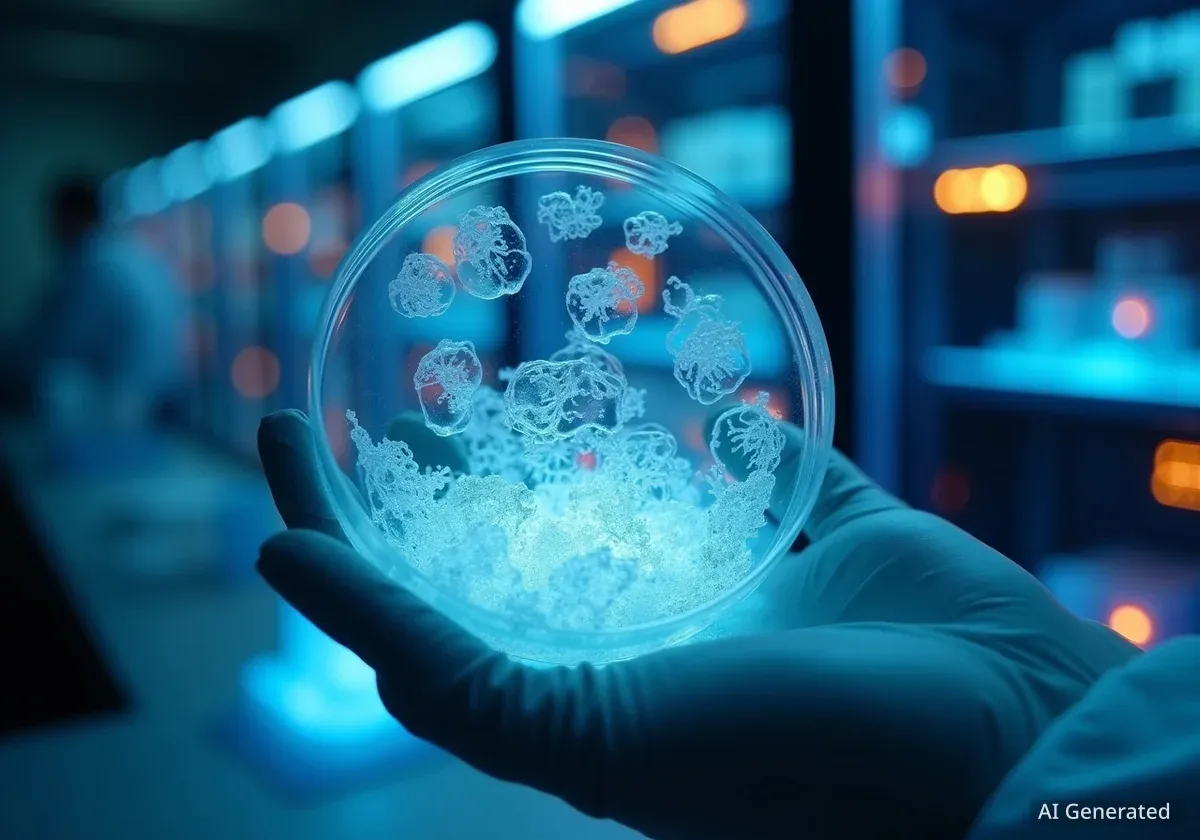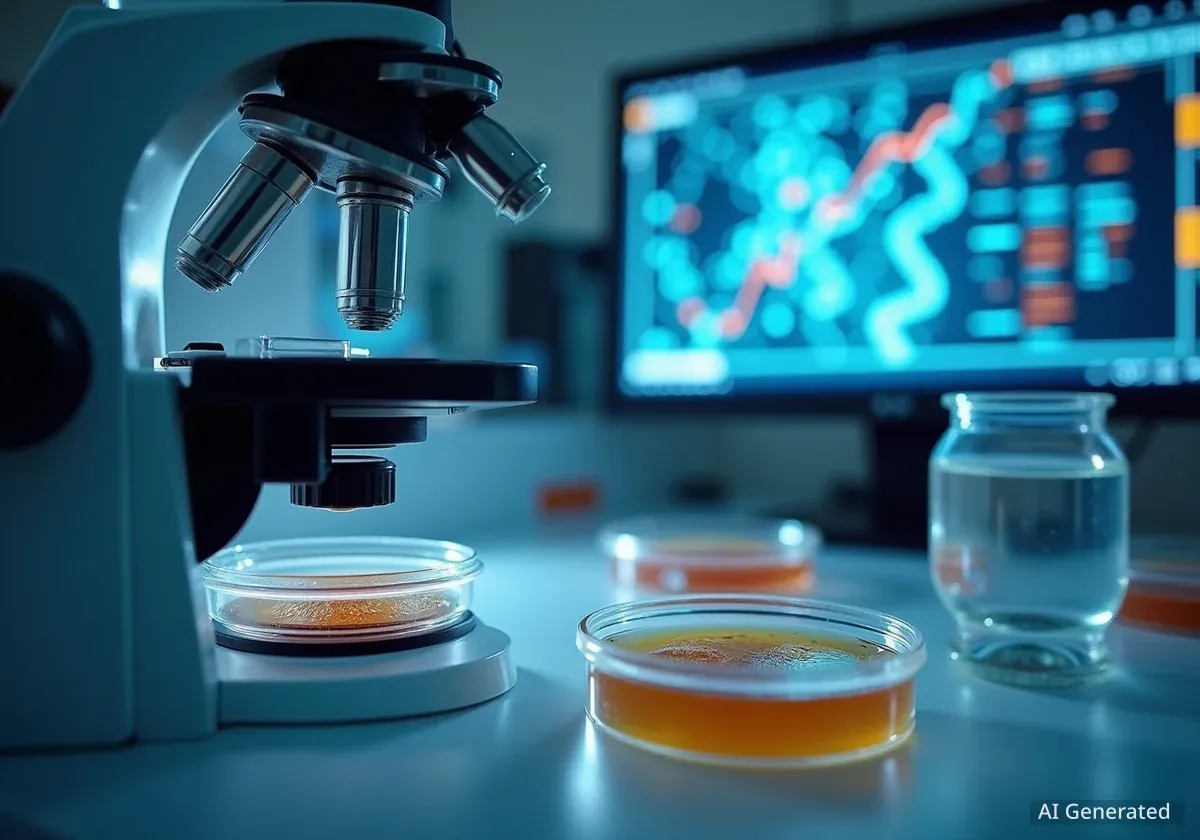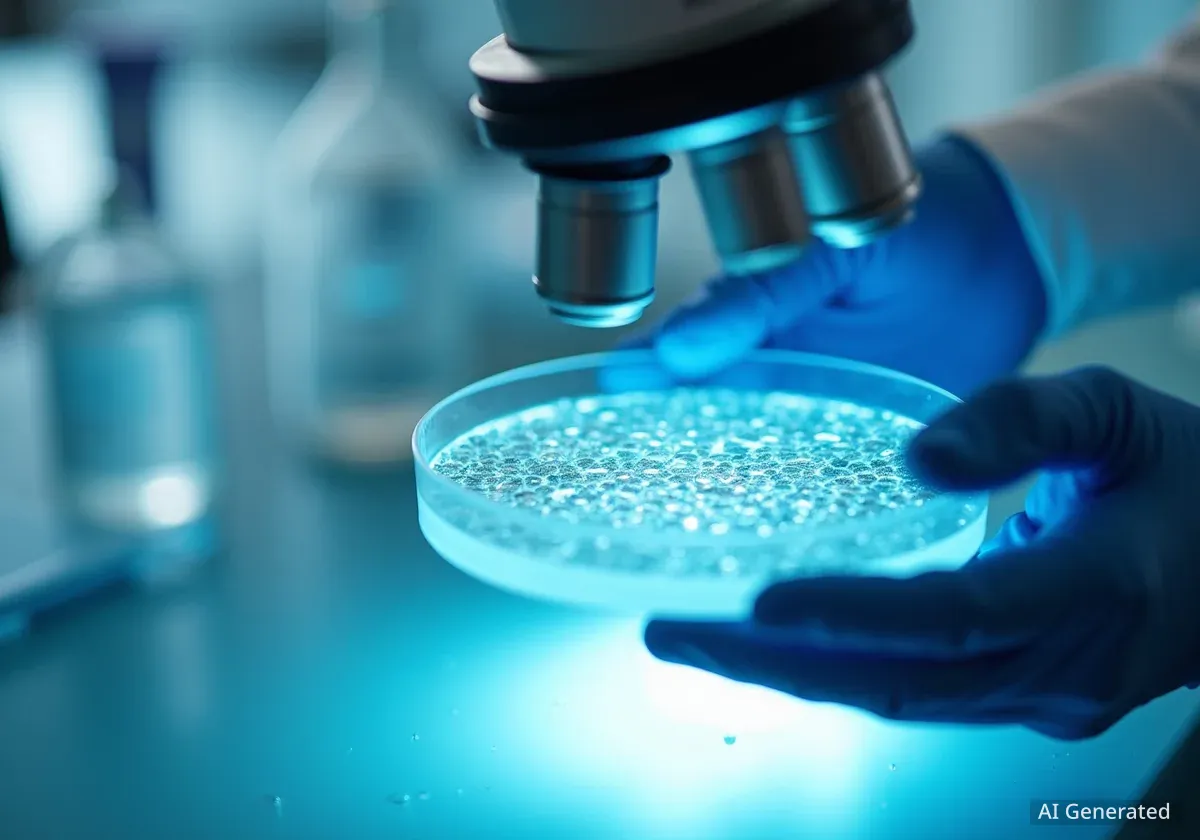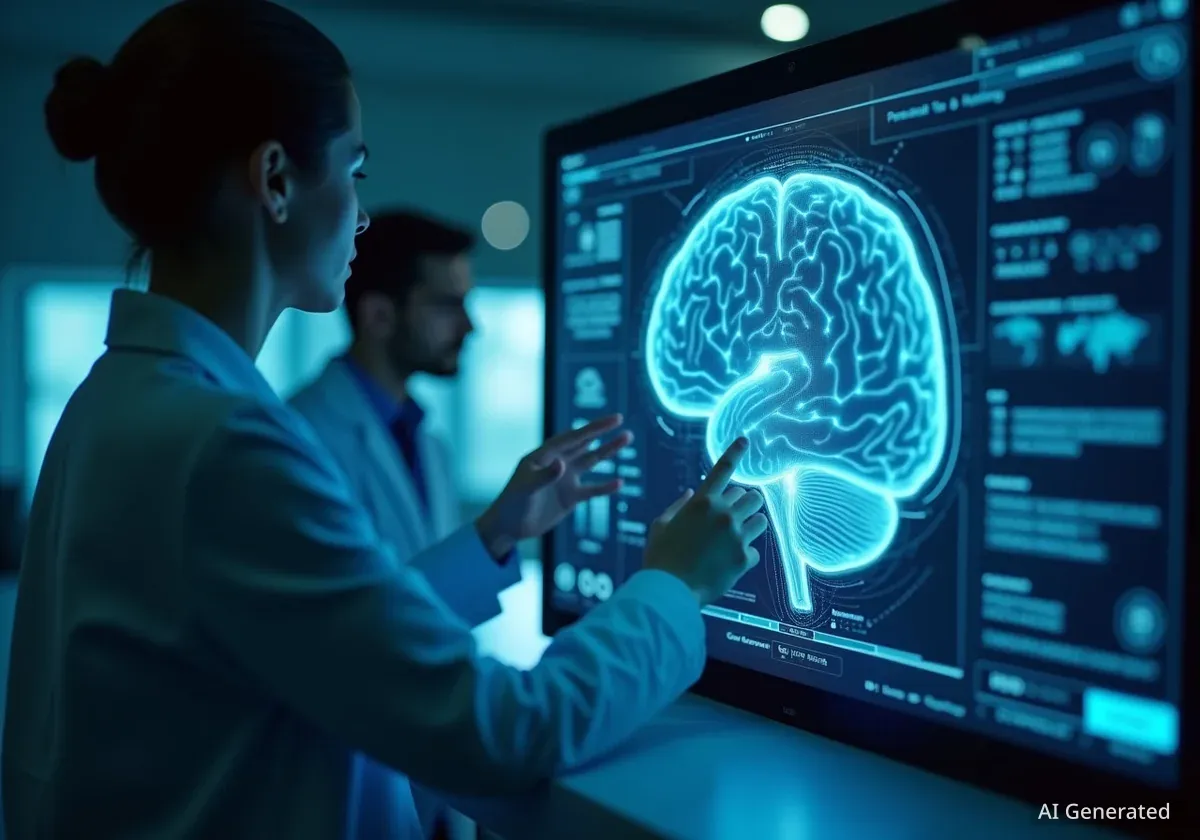Researchers in Switzerland are making significant strides in biocomputing by growing small clusters of human brain cells, known as organoids, and using them to perform computational tasks. The project, led by the company FinalSpark, aims to create a new form of processing power that could be far more energy-efficient than current silicon-based technologies.
These biological processors, referred to as "wetware," are developed from human stem cells and can survive for several months. While the technology is in its early stages, it represents a novel approach to computing that merges biology with digital information processing.
Key Takeaways
- Scientists at FinalSpark are developing biocomputers using organoids, or mini-brains, grown from human stem cells.
- The goal is to create highly energy-efficient servers for data centers that mimic how artificial intelligence learns.
- The biological components, termed "wetware," are kept alive in a controlled lab environment but face challenges like nutrient delivery and limited lifespan.
- Other research groups, including Cortical Labs and Johns Hopkins University, are exploring similar technology for gaming and disease modeling.
- Experts believe biocomputing will likely complement, rather than replace, traditional silicon-based computers in the future.
The Science of Wetware
The concept of biocomputing involves using living biological material to process information. At the FinalSpark lab in Vevey, Switzerland, this process begins with human stem cells sourced from a certified clinic in Japan. The donors remain anonymous.
Dr. Fred Jordan, co-founder of FinalSpark, explained that the term for this biological hardware is "wetware." His team cultivates the stem cells over several months, guiding them to develop into complex clusters of neurons and other brain cells. These small, spherical structures are the organoids.
Dr. Flora Brozzi, a cellular biologist at the lab, manages the delicate process of growing these mini-brains. Once an organoid is mature, it is placed onto an array of electrodes. This interface allows researchers to send electrical signals to the neurons and record their responses on a standard computer.
Interacting with Biological Processors
The interaction is currently basic. A simple keyboard press can send an electrical impulse through the electrodes to the organoid. The resulting neural activity is then displayed as a graph, similar to an electroencephalogram (EEG) reading.
However, the responses are not always predictable. During one demonstration, repeated signals caused the organoid to stop responding before emitting a distinct burst of energy. Dr. Jordan noted that there is still much to learn about why the organoids behave the way they do.
The ultimate goal is to train these neural clusters to perform specific tasks. "For AI, it's always the same thing," Dr. Jordan said. "You give some input, you want some output that is used. For instance, you give a picture of a cat, you want the output to say if it's a cat."
From Science Fiction to Lab Reality
The idea of living computers has long been a staple of science fiction. Dr. Jordan acknowledges the unusual nature of his work. "When you start to say, 'I'm going to use a neuron like a little machine', it's a different view of our own brain and it makes you question what we are," he stated.
Challenges in Biocomputing
Unlike a silicon chip that only requires electricity, a biocomputer needs a life-support system to function. Keeping the organoids alive and healthy is one of the most significant hurdles for researchers in the field.
Simon Schultz, a professor of Neurotechnology at Imperial College London, highlighted a key issue. "Organoids don't have blood vessels," he explained. The human brain relies on an extensive network of blood vessels to deliver nutrients and oxygen. Scientists have not yet figured out how to replicate this vascular system in lab-grown organoids.
This limitation directly affects their longevity. While FinalSpark has improved the survival time of its organoids to about four months, their eventual death is inevitable. When this happens, the experiment must be stopped and restarted.
Observing the End of Life
Dr. Jordan's team has recorded thousands of organoid deaths over the past five years. He described observing a sudden, rapid increase in neural activity in the final moments before an organoid dies. This phenomenon has drawn comparisons to reports of increased brain activity observed in some humans at the end of life.
A Complementary Technology
FinalSpark is not the only organization pursuing biocomputing. In 2022, the Australian company Cortical Labs reported that it had successfully taught a collection of lab-grown neurons to play the classic video game Pong.
Meanwhile, researchers at Johns Hopkins University in the United States are using similar mini-brains for a different purpose. Their work focuses on modeling neurological conditions such as Alzheimer's and autism. This approach could accelerate drug development and reduce the need for animal testing.
Dr. Lena Smirnova, who leads the research at Johns Hopkins, sees the technology as a valuable scientific tool but is cautious about its broader applications. "Biocomputing should complement – not replace – silicon AI, while also advancing disease modeling and reducing animal use," she said.
"We shouldn't be scared of them, they're just computers made out of a different substrate of a different material."
- Professor Simon Schultz, Imperial College London
Professor Schultz shares this view, suggesting that wetware will find its own specific uses. "I think they won't be able to out-compete silicon on many things, but we'll find a niche," he commented.
For Dr. Jordan, the work remains deeply connected to his fascination with science fiction. "I've always been a fan of science fiction," he said. "Now I feel like I'm in the book, writing the book."





